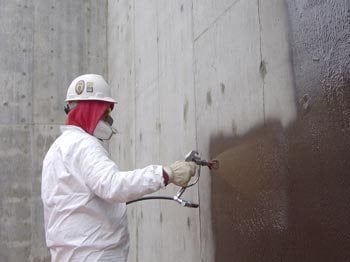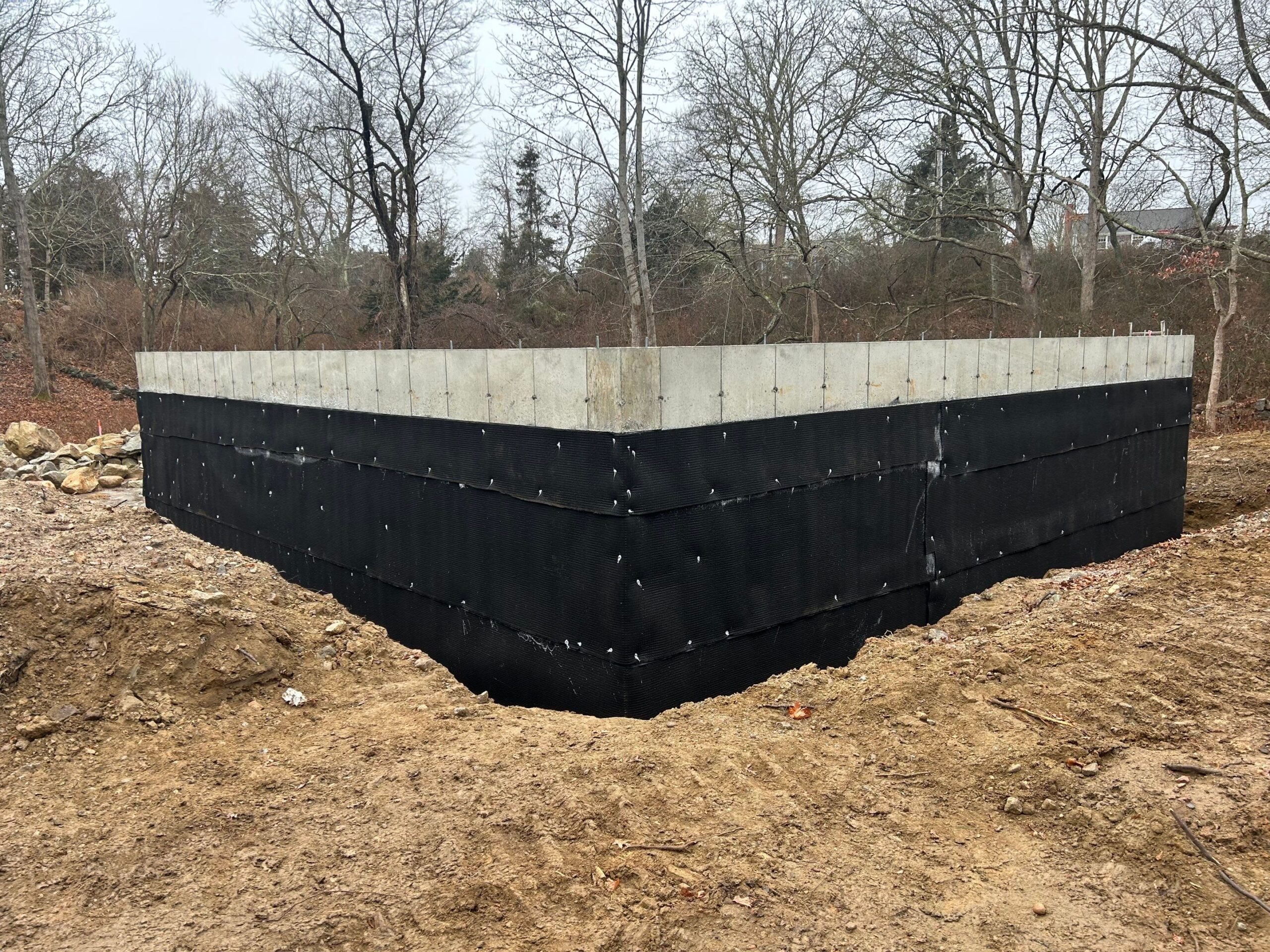Professional advice on dealing with rising damp from damp proofing newcastle
Comprehending the Significance of Damp Proofing in Stopping Structural Damage
Wet proofing serves as a necessary defense against wetness infiltration in buildings. This protective procedure can protect against considerable architectural damages, yet several home proprietors stay not aware of its value. Identifying the indicators of dampness and recognizing the numerous remedies readily available can be important. Nonetheless, ignoring wet proofing can cause serious effects. What are the specific dangers and solutions that residential or commercial property proprietors should consider?
What Is Damp Proofing and Exactly How Does It Work?
Moist proofing works as a vital barrier against dampness intrusion in structures. mould removal newcastle. This process includes using details products and techniques to avoid water from permeating wall surfaces, floors, and other structural aspects. Usually, damp proofing can be accomplished through the setup of damp proof membrane layers, finishes, or making use of specialized sealants.These techniques work by creating a safety layer that inhibits moisture movement, making certain that the indoor atmosphere stays healthy and balanced and completely dry. Wet proofing is especially essential in locations vulnerable to high humidity or groundwater, as it helps preserve the honesty of the framework over time.Moreover, effective wet proofing adds to energy effectiveness by preventing warmth loss related to damp settings. By resolving potential wetness issues before they escalate, damp proofing functions as an aggressive procedure in securing structures from the harmful impacts of water damage, inevitably lengthening their life-span and keeping their worth
Usual Indicators of Moisture in a Structure
Moisture problems within a structure can materialize with numerous visible indications that suggest the existence of dampness. One popular indication is the look of water stains on ceilings or wall surfaces, which often indicates moisture infiltration. Additionally, peeling off or gurgling paint can suggest that excess moisture is entraped beneath the surface, leading to degeneration. One more typical indication is the visibility of mold and mildew, which grow in moist conditions and can frequently be identified by their mildewy odor. A rise in moisture degrees can create condensation on home windows and various other surfaces, highlighting wetness problems. Unequal or distorted floor covering might signify underlying wetness that jeopardizes architectural honesty. Identifying these indications early can help minimize potential damages and preserve a safe living environment. Normal inspections and timely activity are essential in resolving dampness issues prior to they intensify.
The Threats of Disregarding Damp Proofing
Ignoring moist proofing can bring about substantial hazards to a structure's architectural stability, as wetness build-up might damage foundations and wall surfaces. Additionally, extended wetness develops an environment favorable to mold growth, presenting major carcinogen to occupants. Resolving these risks is crucial for making sure both security and longevity of the residential or commercial property.
Structural Stability Risks
They expose their buildings to significant architectural integrity dangers when homeowners overlook the value of effective moist proofing. Extended moisture infiltration can result in the growth of mold, which compromises fundamental elements and can compromise total security. Additionally, excess moisture can erode concrete and brickwork, causing fractures and architectural failings. Wood components are specifically susceptible; they can rot and lose load-bearing capacity, posing serious threats to the structure's framework. Moreover, untreated moist conditions might draw in pests, such as termites, which even more aggravate architectural damage. Inevitably, ignoring moist proofing steps can bring about costly repair services and possible security threats, emphasizing the crucial function of positive damp management in preserving the integrity of houses.
Health Risk Worries
How can an apparently small oversight bring about major wellness threats? Disregarding moist proofing can develop an atmosphere favorable to mold and mildew growth, which presents significant health dangers. Mold and mildew spores can activate allergies, respiratory problems, and various other health and wellness difficulties, particularly in prone populaces such as youngsters, the elderly, and people with pre-existing problems. Furthermore, relentless wetness can draw in pests like rats and pests, which lug diseases that additionally compromise wellness. The presence of moisture likewise adds to a decline in interior air top quality, aggravating asthma and various other breathing ailments. The failing to resolve wet issues not just threatens structural integrity but likewise endangers the health of passengers, highlighting the critical demand for efficient damp proofing measures.
Various Kinds Of Damp Proofing Solutions
Numerous factors can add to damp problems in structures, picking the proper moist proofing solution is crucial for preserving structural honesty. Numerous alternatives are readily available, each customized to particular conditions.One typical solution is a damp-proof membrane layer (DPM), usually made of polyethylene or bitumen, which is set up in floors and walls to stop wetness ingress. One more alternative is damp-proof courses (DPC), which are layers of water-proof material positioned within walls to block increasing damp.Chemical damp proofing involves injecting waterproofing chemicals right into wall surfaces to produce a barrier versus wetness. Additionally, outside treatments such as tanking, which entails using a water-proof layer to the outside of foundations, can be efficient in avoiding water penetration.Each remedy has its advantages and is picked based upon the building's particular issues, ecological conditions, and lasting upkeep factors to consider, making certain perfect security against damp-related damage.

The Price of Damp Damages vs. Prevention
Comprehending the economic implications of damp damage compared to prevention highlights the relevance of positive procedures. The prices related to wet damage can be considerable, including repairs to architectural elements, mold and mildew removal, and prospective health-related expenditures. House owners might face substantial financial pressure if comprehensive damage occurs, bring about raised insurance coverage premiums and lost home value.In comparison, buying damp proofing services is commonly much more affordable. First expenses for prevention approaches, such as installing damp-proof membranes or improving drainage systems, are commonly surpassed by the long-lasting savings from preventing expensive repairs. Furthermore, stopping moist problems can enhance a home's overall worth and charm, making it a sensible investment. When examining the price of wet damage versus prevention, it becomes clear that taking aggressive steps can secure monetary rate of interests and preserve the integrity of the home in time.
Selecting the Right Damp Proofing Method for Your Property
Which moist proofing approach is most appropriate for a details property often depends on various variables, consisting of the structure's age, existing wetness issues, and neighborhood environmental problems. For older structures, typical methods such as bitumen membrane layers or cementitious finishings might be a lot more efficient, as they can give a robust obstacle against increasing damp. In contrast, newer structures could profit from modern options like infused damp-proof training courses, which are less intrusive and can be tailored to particular wetness challenges.Additionally, properties in areas with high water tables or hefty rains might call for advanced techniques, such as damp proofing newcastle dental caries wall water drainage systems or outside waterproofing. House owners need to additionally consider the details materials utilized in their structure's building and construction, as some approaches might not work. Eventually, an extensive analysis by a professional can lead homeowner in choosing the most efficient damp proofing approach tailored to their distinct circumstances.
Keeping Your Damp Proofing System Over Time
Normal maintenance of a damp proofing system is crucial for ensuring its long-term effectiveness and protecting a home from moisture-related damages. Property owners should perform routine assessments to determine any kind of indicators of wear or compromise in the wet proofing layer. This consists of monitoring for splits, peeling off paint, or mold and mildew development, which may suggest moisture intrusion.Additionally, it is a good idea to clean rain gutters and downspouts consistently to stop water build-up around the foundation. Reapplying membranes or sealants might be essential if damage is observed.Engaging professional solutions for periodic analyses can better improve the durability of the system. These specialists can give understandings into prospective vulnerabilities and suggest timely repairs.
Frequently Asked Questions
How Much Time Does Damp Proofing Therapy Last Before Requiring Fixings?
The long life of wet proofing treatment commonly ranges from 10 to thirty years, relying on elements such as the method utilized, ecological problems, and maintenance techniques. Routine evaluations can aid identify when fixings might be necessary.
Is Do It Yourself Damp Proofing Effective Compared to Expert Solutions?
The efficiency of DIY wet proofing differs considerably. damp removal newcastle. While some people may accomplish acceptable results, expert services generally assure thorough remedies, leveraging experience and quality materials to avoid future issues much more reliably than the majority of do it yourself efforts
Can Damp Proofing Improve Indoor Air High Quality?
The concern of whether wet proofing can improve interior air top quality arises frequently. Efficient moist proofing lowers moisture degrees, thus reducing mold and mildew development and irritants, ultimately contributing to a much healthier indoor atmosphere for owners.
Exist Certain Regulations for Damp Proofing in Different Locations?
Regulations for wet proofing vary by area, often influenced by neighborhood building regulations and ecological problems. Compliance assurances efficient moisture control, advertising and safeguarding structures safety and security, which highlights the requirement for adherence to these certain laws.

What Are the Long-Term Conveniences of Correct Damp Proofing?
The long-lasting benefits of proper wet proofing consist of enhanced architectural stability, decreased upkeep costs, enhanced interior air high quality, and boosted residential property value. These benefits add to a much healthier living atmosphere and prolonged life expectancy of buildings. Usually, damp proofing can be accomplished via the installation of wet evidence membrane layers, finishings, or the usage of specialized sealants.These techniques function by developing a safety layer that inhibits wetness movement, ensuring that the indoor environment remains dry and healthy and balanced. Damp proofing is specifically vital in areas susceptible to high moisture or groundwater, as it helps preserve the honesty of the framework over time.Moreover, reliable wet proofing adds to power performance by protecting against warm loss associated with wet settings. Disregarding damp proofing can lead to considerable dangers to a structure's architectural integrity, as moisture build-up may weaken walls and foundations (mould treatment newcastle). Various variables can add to damp problems in structures, choosing the appropriate moist proofing service is vital for protecting structural stability. Which moist proofing technique is most appropriate for a specific residential or commercial property often depends on different variables, consisting of the structure's age, existing wetness concerns, and neighborhood ecological conditions